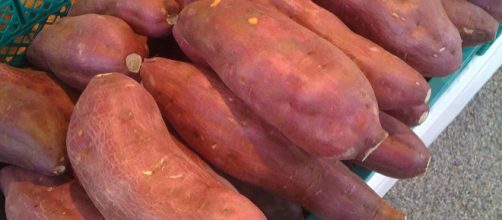The sweet potato is a tropical plant. Credit for its discovery is often given to the Spanish explorers who arrived on the American continents in search of a passage to India. Columbus encountered it in the West Indies, Balboa in Central America, and Pizarro in Peru. Today it is produced widely throughout the world.
Origins of the sweet potato
This underground tuber, which grows on the roots of the ipomoea batatas plant, was not discovered growing wild. Instead, it had been cultivated for thousands of years by the Incan and pre-Incan people. They called it “batata,” from which our word “potato” is derived.
Like the continent on which it was found, the sweet potato thrived long before the arrival of European adventurers. These explorers were instrumental in sharing the tuber with their countries of origin, carrying it back to Spain and Italy. From there it found its way to Austria, Germany, Belgium, and England even before the Irish potatoes arrived. Today, the sweet potato is cultivated around the world, as far as Russia, the Pacific islands, and the United States.
Unique sweet potato facts
Did you know that the sweet potato produces more pounds of food per acre than any other cultivated plant? It even surpasses corn and the Irish potato in this feat! Additionally, it is more nutritious than the Irish potato.
There are roughly 200 varieties, which are grown as far north as New Jersey and as far south as the tropics of South America.
As a member of the morning glory family, the wandering vines of the ipomoea batatas plant produce pink or purple blossoms resembling the traditional morning glory. The delicious, starchy tubers that develop from its roots contain carotene.
Carotene is the chemical that colors autumn leaves and carrots orange. Latin American Indians mix the rich potato juice and lime juice to make permanent red dye.
They were also popular with more than one Washington. George Washington grew these spuds at Mount Vernon. George Washington Carver used them to create 118 different products, including postage stamp glue and starch for cotton fabrics.
North Carolina, a leading United States producer of the tuber, claims it as the official state vegetable. They contribute about 40% of the national harvest, which totals about 1 million tons! China, however, is a top producer, growing 80 million tons per year. Africa produces 14 million tons, while Central and South America grow roughly 2 million tons.
Excellent nutrition
If you are looking for a low-fat food, the sweet potato has only 0.1 gram of fat per 100 grams. It contains about 77% water, 20.1% carbohydrates, 1.6% protein, and 3% fiber.
A medium-sized sweet potato has about 27 grams of carbohydrates, 53% of which are complex carbs. Roughly 32% of the carbohydrates are simple sugars such as glucose, fructose, sucrose, and maltose.
Because they have a medium to high glycemic index, a large amount in a single meal may be problematic for diabetics.
Even though the protein content is relatively low, the sweet potato remains a valuable protein source in several developing countries. A unique protein called sporamins accounts for over 80% of the total found in the tuber. These proteins may possess antioxidant properties, according to recent research by the Long Ashton Research Station of the Department of Agricultural Sciences at the University of Bristol.
These spuds qualify as a superfood because of their high vitamin and mineral content. They are packed with vitamins A, B5, B6, thiamin, niacin, riboflavin, and are high in carotenoids.
Furthermore, they contain manganese, copper, pantothenic acid, potassium, and phosphorus. With a high concentration of vital nutrients, the sweet potato is a super spud, rich in both nutrients and global impact.


